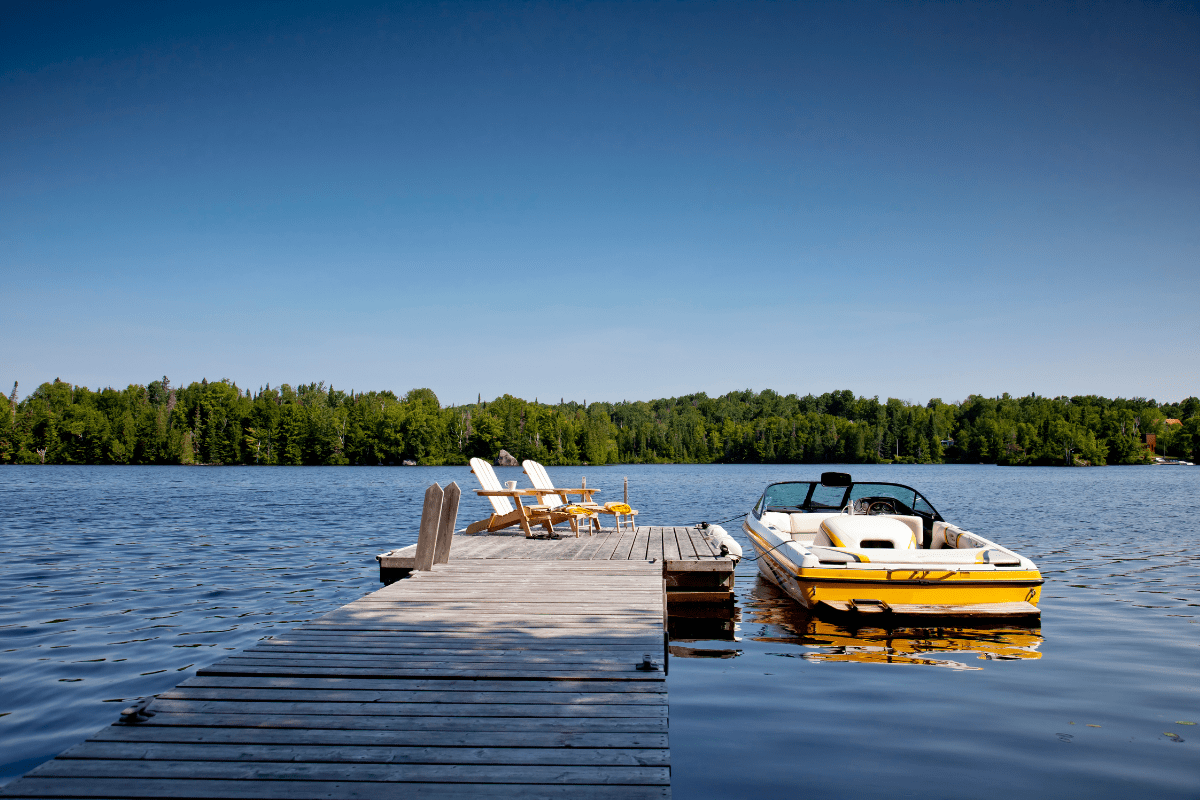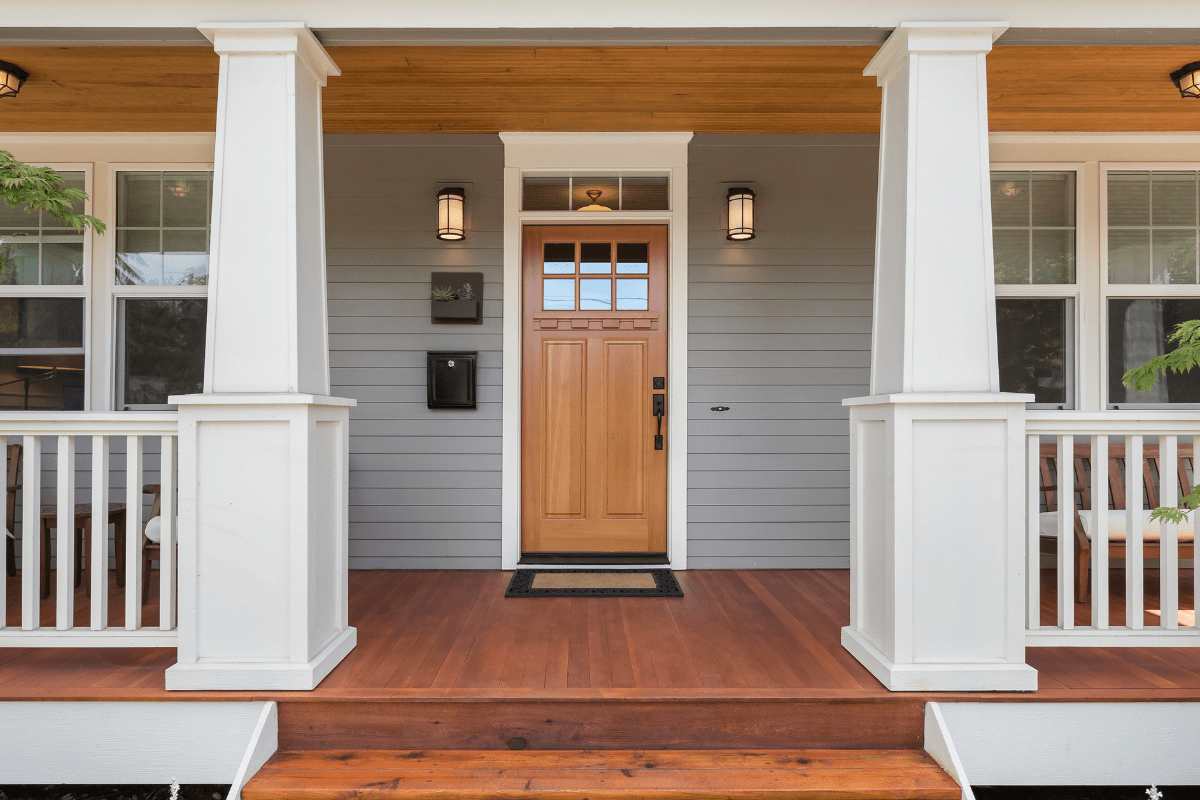Who would've thought the desert state famous for cacti and tumbleweeds actually has over 50 lakes perfect for everything from wakeboarding to lazy afternoon fishing? Arizona's surprising collection of reservoirs and natural water bodies offers year-round escape from the heat, though you might want to check those water levels before hauking your boat across the state.
The current state of Arizona's water playground
Let's address the elephant in the room first: yes, the drought is real, and yes, some of our lakes look more like puddles compared to their glory days. Lake Powell sits at about 47% capacity while Lake Mead has dropped to a concerning 31%, leading Arizona officials to explore importing billions of gallons of water just to keep things flowing. But here's the thing: most of our Salt River lakes are actually doing pretty well at 70% full, and there's still plenty of water for your summer adventures.
The sweet spot for visiting falls between March and May when temperatures hover in that perfect 70-80°F range and you won't feel like you're melting into your boat seat. Plus, the spring wildflowers around the lakes can be absolutely stunning if we get decent winter rain. Each season brings its own perks though, from uncrowded fall weekends to those magical winter mornings when you might actually need a jacket.
Phoenix-area lakes that won't eat your whole weekend
Lake Pleasant lives up to its name
Just 45 minutes northwest of Phoenix, Lake Pleasant sprawls across 23,000 acres with over 100 miles of shoreline, making it the go-to spot when you need a water fix but can't commit to a road trip. The two marinas, Pleasant Harbor and Scorpion Bay, offer everything from slip rentals to the world's largest floating waterslide, which sounds ridiculous until you see kids and adults alike losing their minds on it.
What really surprises people is the excellent scuba diving with visibility reaching 30+ feet in winter months. Who needs the ocean when you can explore underwater formations right here in the desert? The Desert Tortoise and Roadrunner campgrounds provide 148 sites ranging from basic $15 spots to fancy $300-per-night setups with all the bells and whistles. Pro tip: book through the Maricopa County Parks system early if you want a weekend spot between March and October.
Roosevelt Lake: Where size matters
Arizona's largest lake contained entirely within state borders, Roosevelt Lake boasts 21,493 acres and 128 miles of shoreline about 80 miles northeast of Phoenix via the Beeline Highway. This is where Phoenix folks go when they want to open up the throttle since there are no motor restrictions here. The lake produces trophy bass consistently, with special slot limits protecting those 13-16 inch fish to keep the population healthy.
Roosevelt Lake Marina offers full services including an RV park, but the real gem is the hundreds of free dispersed camping spots along the shoreline. Just pull up, find a flat spot, and you're home for the night without spending a dime. The Cholla Campground books through Recreation.gov if you prefer actual amenities like toilets and picnic tables.
The scenic drives worth the gas money
Lake Powell: Still epic despite the bathtub ring
Yes, Lake Powell sits at less than half capacity, and yes, you can see that notorious bathtub ring showing where the water used to be. But this nearly 200-mile long reservoir with 2,000 miles of shoreline (when full) remains absolutely spectacular. The 96 major side canyons create endless exploration opportunities, whether you're in a kayak or commanding a houseboat.
Wahweap Marina offers slip rentals from $11.48 to $16.02 per foot monthly, while Antelope Point Marina recently added electric pontoon rentals at $375 daily for those wanting a quieter experience. You'll need a Glen Canyon National Recreation Area pass to enter, but camping ranges from developed sites to completely primitive shoreline spots requiring no permit whatsoever.
Canyon Lake: Instagram's favorite Arizona lake
Located 50 miles east of Phoenix on the Apache Trail, Canyon Lake might only cover 950 acres, but those dramatic red rock canyon walls make it Arizona's most photogenic body of water. The Dolly Steamboat offers narrated tours through the scenic canyon, though honestly, renting a small boat and exploring on your own gives you way more flexibility for finding that perfect swimming cove.
This lake holds a special place in Arizona fishing lore, producing the state record largemouth bass weighing 16 pounds, 7.68 ounces back in 1997. Anglers still chase that record, though most of us would be thrilled with anything over 5 pounds.
Apache Lake: The reward for brave drivers
If you're willing to navigate some genuinely sketchy roads, Apache Lake rewards you with 17 miles of pristine water surrounded by the Superstition Wilderness. The Apache Lake Resort surprises visitors with actual hotel rooms, RV sites, and a waterfront restaurant in this remote setting. Most summer weekends, you can claim an entire cove to yourself, with painted canyon walls creating the kind of backdrop that makes your friends think you hired a photographer.
Mountain lakes: Your summer salvation
When Phoenix hits 115°F in July, smart locals head to higher elevations where the lakes stay refreshingly cool.
Woods Canyon Lake keeps its cool
Sitting pretty at 7,510 feet in the Apache-Sitgreaves National Forest, Woods Canyon Lake maintains comfortable 65°F temperatures even during the desert's most punishing heat. The 55-acre lake enforces an electric motors only rule, preserving that alpine tranquility you drove three hours to find. Rainbow and brown trout thrive in these cool waters, with Arizona Game and Fish stocking regularly throughout the season.
Spillway Campground's 26 sites book through Recreation.gov, but good luck snagging a June or July spot unless you're planning six months ahead. The Woods Canyon Store rents boats and sells those forgotten essentials like sunscreen and beer, making this high-country retreat surprisingly civilized.
Lake Mary: Flagstaff's backyard
Just 12 miles from Flagstaff at 7,000 feet, Lake Mary actually consists of two lakes, Upper and Lower, with Upper Lake Mary spanning 450 acres when full. Unlike most mountain lakes that restrict motor size, Upper Lake Mary allows unlimited horsepower, making it perfect for water skiing at elevation. Northern pike provide the main attraction for anglers, growing fat and aggressive in these productive waters.
The specialty lakes worth seeking out
Watson Lake: Nature's sculpture garden
Near Prescott, Watson Lake's 380 acres are dotted with massive granite boulders called the Granite Dells, creating a landscape that looks more like another planet than Arizona. Swimming is prohibited, but the 5 mph speed limit makes it perfect for kayaking through boulder mazes that would make any paddler giddy. The adjacent Peavine Trail connects to the Iron King Trail for over four miles of hiking, while rock climbers tackle world-class granite formations.
Summer hours extend to 10 PM, and the $3 vehicle fee is waived on Wednesdays, making midweek visits an absolute bargain. Just remember: no swimming means no swimming, no matter how inviting that water looks on a hot day.
Making the most of Arizona's fishing scene
Fishing licenses are required for anyone 10 and older, running $37 annually for residents and $55 for non-residents through Arizona Game and Fish. The investment pays off quickly considering the quality of fishing available.
Arizona's fishing hall of fame includes:
- Lake Havasu's 5.8-pound world record redear sunfish
- Canyon Lake's 16-pound state record largemouth bass
- Saguaro Lake's reputation for 10+ pound giants
- Roosevelt Lake's consistent trophy production
- High-elevation Apache trout waters
The state's community fishing program stocks 50+ urban lakes with rainbow trout from November through March, with special "incentive" stockings in January featuring larger 13-inch fish. Professional guides charge around $300 for half-day trips and $495 for full-day adventures, including all equipment except licenses.
Camping strategies that actually work
Securing lakeside camping requires strategy and timing. Arizona State Parks accept reservations up to 13 months ahead with a $3.60 non-refundable booking fee, while Recreation.gov sites open six months in advance. Popular spots like Woods Canyon Lake's Spillway Campground fill within hours of becoming available for peak summer dates.
Camping cost breakdown:
- Free: Roosevelt Lake dispersed shoreline
- $15-50: Basic federal and state sites
- $50: Lake Havasu beachfront spots
- $35-75: Private RV resorts
- $100+: State park cabins with AC
For those preferring solid walls, Arizona's state park cabin program offers air-conditioned comfort at lakes including Patagonia, Lyman, and Alamo. Lake Powell's houseboat rentals provide the ultimate water experience, though summer bookings need to happen months in advance.
Safety stuff that could save your bacon
Water safety isn't optional when 12 people drowned in Maricopa County lakes in 2022 alone. Arizona law requires children under 12 to wear life jackets while vessels are underway, and every boat must carry USCG-approved personal flotation devices for each passenger.
Spring presents particular challenges with water temperatures in the 50-60°F range capable of causing hypothermia even when air temperatures hit the 80s. Many visitors underestimate how quickly cold water saps your strength. Harmful algal blooms occasionally affect lakes during warm months, with golden algae confirmed at Saguaro and Canyon lakes in March 2024 causing significant fish kills.
Monsoon season from June 15 to September 30 brings afternoon thunderstorms capable of producing 100+ mph microbursts and dangerous flash flooding. The 2024 monsoon ranked as the 7th driest on record for Phoenix, but sudden storms still caught boaters off guard. Fire restrictions typically begin in June, prohibiting campfires and smoking on public lands, so check current conditions before heading out.
Planning your perfect lake day
Visit patterns are predictable: spring break and summer weekends bring maximum crowds to accessible lakes like Havasu and Pleasant. Weekday visits eliminate most parking challenges, while arriving before 8 AM on weekends secures prime spots. Fall offers ideal conditions with comfortable temperatures and lighter crowds, though water levels typically reach annual lows before winter precipitation.
Different lakes excel for different activities. Lake Powell and Roosevelt dominate for water sports with vast open waters, while Canyon Lake's towering walls create Arizona's most photogenic setting. Families gravitate toward Lake Pleasant's convenient Phoenix access and Lynx Lake's pine-forested picnic areas. For solitude seekers, Apache Lake's remote location and Chevelon Canyon Lake's no-motor policy provide peaceful escapes.
Entry fees vary wildly: Tonto National Forest lakes charge $8-12 for day use, state parks run $20-25 per vehicle, while some Bureau of Land Management areas cost nothing. Annual passes often make economic sense, with the $80 Tonto Discovery Pass covering all Salt River lakes and the America the Beautiful Pass at $80 annually including all National Park Service and Forest Service sites.
The future of Arizona's lakes
Despite ongoing drought challenges and water allocation concerns, Arizona's lakes continue evolving with new trail systems, cabin additions, and marina upgrades improving the experience. The diverse elevation zones ensure year-round recreation opportunities from desert waterways at 1,000 feet to alpine gems above 7,000 feet.
Whether you're chasing trophy bass, teaching kids to water ski, or just floating with a cold beverage while pretending to fish, Arizona's lakes deliver experiences that seem impossible in a desert state. Sure, water levels fluctuate and summer crowds can test your patience, but there's something magical about finding an oasis in the desert, even if it's man-made and occasionally resembles a bathtub with a ring around it.





